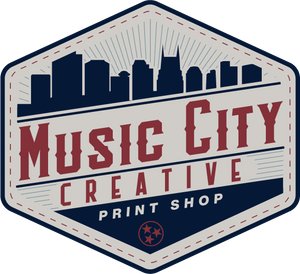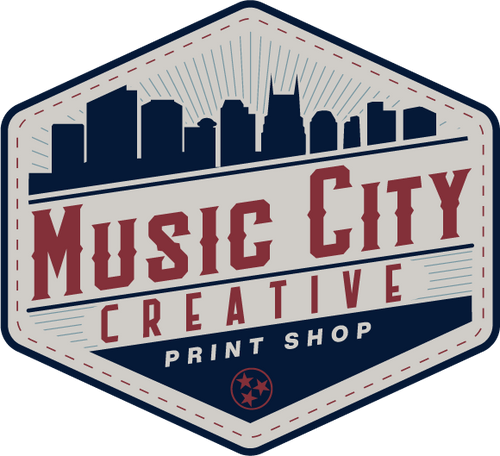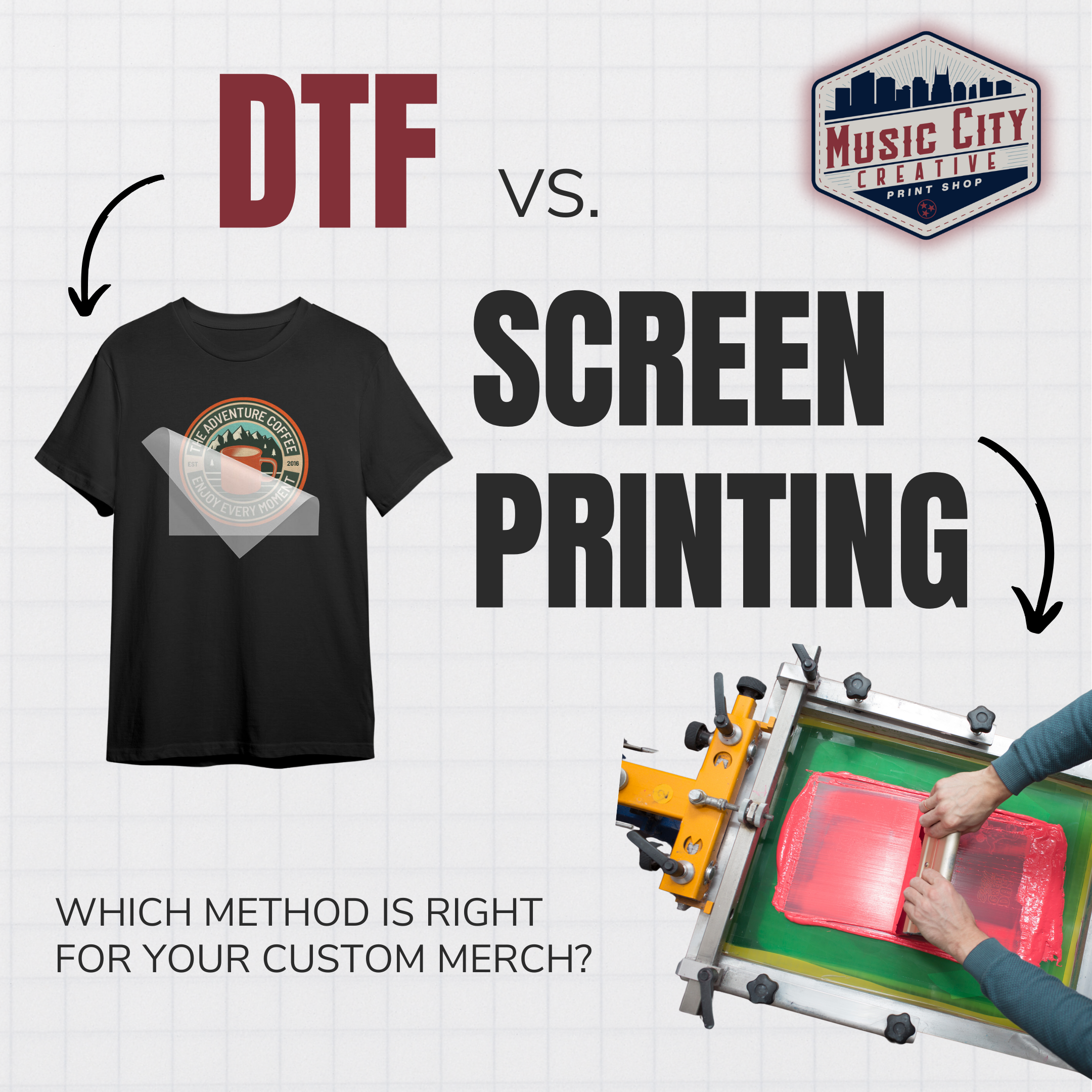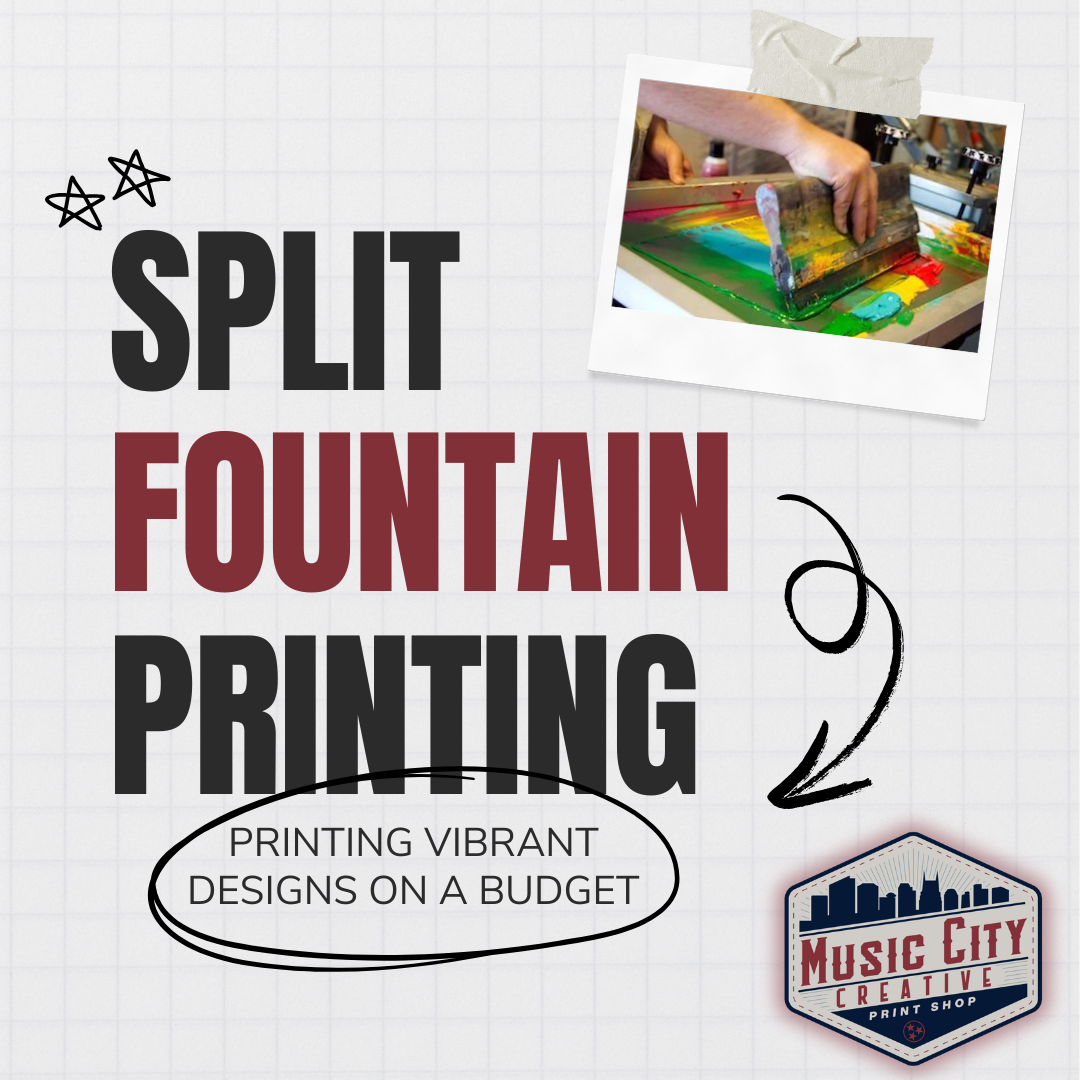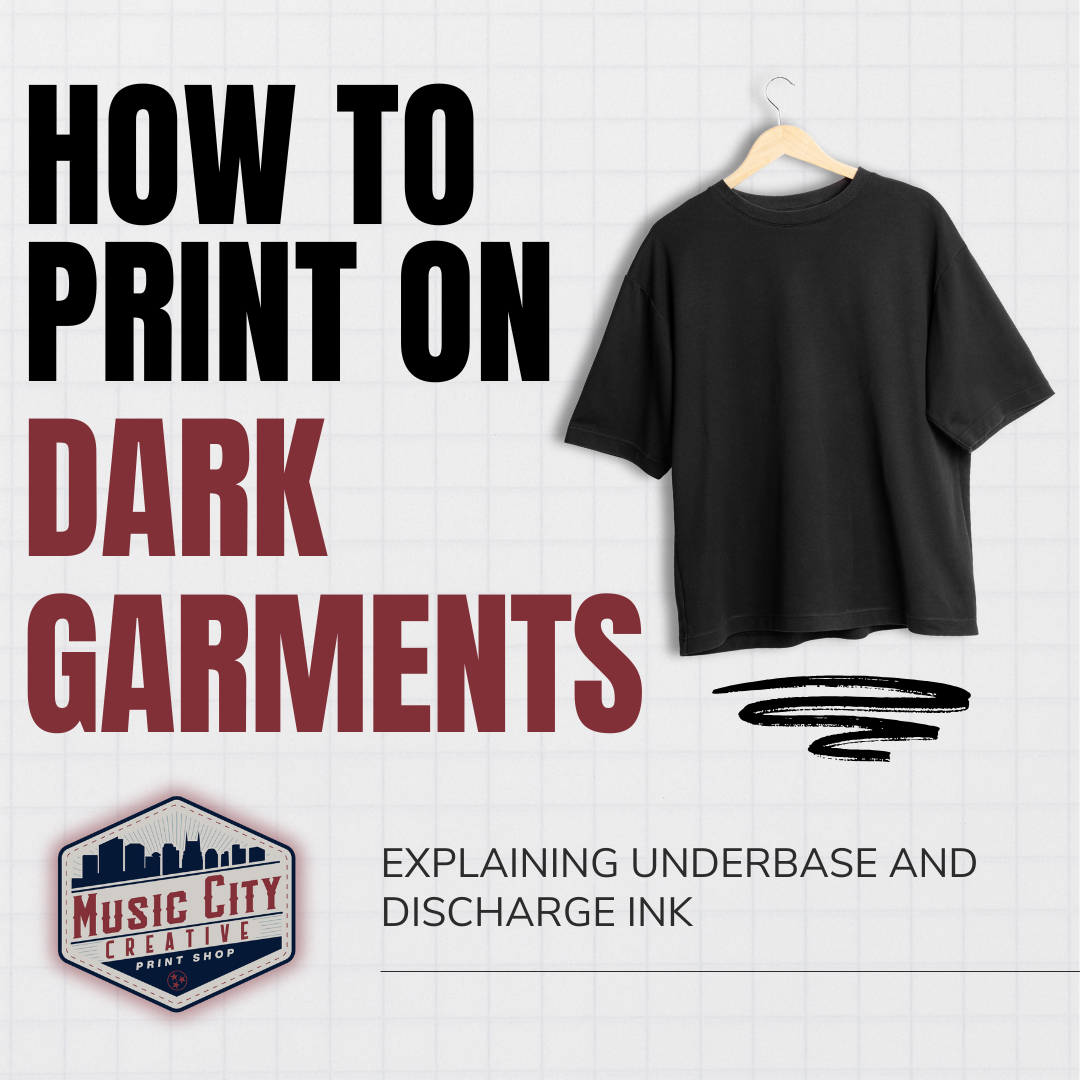Are you torn between Direct-to-Film (DTF) and traditional screen printing for your next custom apparel project? At Music City Creative, we utilize both techniques depending on your goal! In today’s post, we’ll break down the basics of DTF, compare costs and capabilities of each method, and share insider design tips to make sure your artwork shines on every shirt.
What Is DTF (Direct-to-Film) Printing?
DTF is digital printing method where artwork is printed full‑color onto a special film, coated with adhesive powder, and then heat‑pressed to your garment.

Perks of DTF Printing:
-
Unlimited colors: Full‑bleed gradients, tiny floating type, and all the neon hues you can dream of.
-
Low setup cost: At just $25 per design, you can test new looks without breaking the bank.
-
Quick turns on small runs: Need ten tees for your closet drop? No problem.
-
Works on tricky materials: Dark, textured, or performance fabrics—DTF can help!
When to Use DTF Printing
DTF is ideal when you need flexibility, detail, or small batches. It’s perfect for on-demand fulfillment, smaller merch drops, limited-edition designs, or anything requiring vibrant color and fine detail. Because there’s no need to create multiple screens, it’s a great solution for test runs, seasonal promos, or personal projects that need to move fast. If your artwork features gradients, photo-realistic elements, or complex textures, DTF delivers high-quality results that traditional screen printing might struggle to match.

Designing for DTF Printing: Tips & Tricks
-
Use high‑res artwork (300 DPI minimum) - Fine details shine best when your artwork is crisp and clean. Minimum line thickness: .018.
-
Mind the edges - Hard, clean edges help prevent transfer residue and keep your design looking polished.
-
Keep it breathable - Avoid giant solid blocks of ink. Instead, leave open spaces so your garment stays soft and flexible.
-
Embrace RGB - Design in RGB for vibrant color options, but remember the printer will convert to CMYK, so be sure to preview your design in CMYK mode before finalizing.
Ready to pick your perfect print method?
Get a quote or visit musiccitycreative.co/printshop to get more information and secure your production timeline.
